Book Reviews by Annemie Stimie Behr
Muziki, 2014
The accuracy of the Content should not be relied upon and should be independently verified with p... more The accuracy of the Content should not be relied upon and should be independently verified with primary sources of information. Taylor and Francis shall not be liable for any losses, actions, claims, proceedings, demands, costs, expenses, damages, and other liabilities whatsoever or howsoever caused arising directly or indirectly in connection with, in relation to or arising out of the use of the Content.
Journal of the Musical Arts in Africa, Jan 1, 2010
Fontes Artis Musicae, 2007
Journal articles by Annemie Stimie Behr
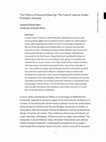
SAMUS (South African Music Studies), 2015
A case study of Jeanne Zaidel-Rudolph's Masada for bassoon and string quartet (1989) and its rece... more A case study of Jeanne Zaidel-Rudolph's Masada for bassoon and string quartet (1989) and its reception history allows for observations to be made regarding the extent to which musicological debates of the last three decades have shifted ideas on musical meaning and authorial control, including the impact these debates have had on the relationship between composers and musicologists. Masada was conceived in the final hours of apartheid and it greeted the dawn of democracy in the form of a recording. In this guise, it surreptitiously entered the art music canon of the 'New South Africa' where its status and importance remained unquestioned for more than a decade. In 2011, my conference paper about Masada stirred a controversy around the work that continues to affect its reception history. Events that followed the conference raise concerns regarding the divided interests of composers and musicologists, which extend to questions around the mandates and ethics of scholarly practices relating to composition and musicology in South Africa. This article flows from that original paper and includes the events that followed, since these now form a crucial part of the discourse on Masada.
Hans Kramer (1911–2002) was important for two reasons: he owned the Home of Music, a unique music... more Hans Kramer (1911–2002) was important for two reasons: he owned the Home of Music, a unique music store in Cape Town, and he founded the Cape Town Concert Club, which hosted regular concerts by international artists. Rather than constructing a biographical narrative, the present article focuses on the contents of the Hans Kramer Collection at the National Library in Cape Town with the aim of uncovering and considering the importance of certain Jewish individuals’ contributions to music patronage in South Africa during the second half of the 20th century. Keeping music at the centre of the investigation, the archive allows a window into Jewish relational nexuses with different local communities and institutions, on the one hand, and international artists and organisations, on the other.

Current musicological discourses in South Africa seldom engage with Afrikaans content and contrib... more Current musicological discourses in South Africa seldom engage with Afrikaans content and contributions, even though there is an acknowledged large body of writing on music in Afrikaans. These writings could add value to both music and general historiographies in South Africa. This article discusses musicrelated articles in two Afrikaans cultural magazines: Die Brandwag (1910–1921) and Die Nuwe Brandwag (1929–1933).
The majority of musicrelated articles in Die Brandwag appeared within the first five years of publication. The most important articles are Bosman di Ravelli’s six fantasies about the life of Chopin. During the latter half of the decade, articles focused mostly on art in general and its relation to nationality. Music played a minor role in these discussions. Examples of these articles are J.F.E. Celliers’s “Kuns in verband met nasionaliteit en geskiedenis” (25 January 1919) and Eric Mayer’s “’n Nasionale kuns in SuidAfrika” (24 December 1919).
During the four years that Die Nuwe Brandwag was published, music was approached in one of two ways: through particular articles (for instance, Jan Bouws’s “Die Nederlandse musiek”) or as a subsection in more general discussions about the arts. All the articles refer to European music history, while the ideals of Afrikaner nationalism permeate the text. The hypothesis of this article is that Afrikaner nationalism has been undertheorised by historians and political scientists, who have been largely uninterested in cultural (specifically music) discourses. More subtle theorisation is thus made possible through studying those texts produced in Afrikaans during the first half of the twentieth century – texts in which a tension emerges between the national
and international ingredients of a particular identity. This article will interpret this tension with reference to Edward Said’s Culture and imperialism (1993).
Dissertation by Annemie Stimie Behr
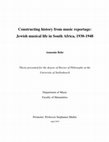
A Jewish cultural life in South Africa is cast by secondary literatures as being English in form ... more A Jewish cultural life in South Africa is cast by secondary literatures as being English in form and Jewish in spirit. This established understanding of a South African Jewish identity is informed by cultural analyses that focus on tensions arising from being Jewish citizens of South Africa. The present thesis draws on socio-musical sources not yet introduced to general historiographies to interrogate this particular construction of Jewish identity. These sources refer to music-related items that appear in the South African Jewish Chronicle and the Zionist Record newspaper publications of 1930-1948. The purpose of subjecting music reportage in local Jewish newspapers to a rigorous content analysis, is to open understandings of Jewish culture in South Africa from wider, cosmopolitan perspectives and to locate the function that music might have had in cultural processes of identity formation.
Jews exercised South African musical citizenship through supporting the forming of musical institutions, as well as through pedagogy, the performing arts and composition, representations of which align with English cultural forms in the music reportage. While also concerned with securing the Jewish position in South Africa, Zionism developed a vision of and for Palestine by translating the act of making aliyah (immigrating to Palestine) into a symbolic, musical practice.
The makings of the community’s internal Jewish identity forged around tensions between Eastern European and Western European (most notably German) Jewish immigrants. Musical representations of Eastern Europe, which emanated from Russia, America and South Africa, generated a volume of content that reflected a Jewish preoccupation with Russian Jews as both ignobly backward and commendably Jewish. German Jews fell out of favour with the South African Jewish community because of their proclivity to assimilate, which could explain why they received little musical attention in these newspapers. However, engagement with contemporary events in Europe, and strong depictions of German culture in the primary source material, emanated from the United States. American musical representations reveal the degree to which the internal tensions of European Jewry were racial.
The musical geographies of England, Palestine, Russia, Germany and America in a South African Jewish imaginary reveal a cosmopolitanism of Jewish whiteness and the musical vision it harboured for Palestine as a Jewish country of the West.
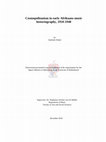
By submitting this thesis/dissertation electronically, I declare that the entirety of the work co... more By submitting this thesis/dissertation electronically, I declare that the entirety of the work contained therein is my own, original work, and that I have not previously in its entirety or in part Abstract Current musicological discourses in South Africa seldom engage with Afrikaans content and contributions, even though there is an acknowledged large body of writing on music in Afrikaans. These writings could significantly inform music and general historiographies in South Africa. This study discusses music-related articles in the following Afrikaans magazines and newspapers of the early twentieth century: The subject matter of a large proportion of these music-related articles comprises the history of Western European music. This includes biographies of composers and histories of stylistic periods, genres and instruments. Despite the physical distance between Europe and Africa, Afrikaners' attraction to Europe borders at times on a feeling of belonging to this tradition. This cosmopolitan notion of belonging has received little attention compared to themes of race, language and nationalism in twentieth-century South African historiography. A neglected Afrikaans discourse on music, however, presents an opportunity to explore the possibilities of cosmopolitanism in a further interpretation of Afrikaner identity and understanding of South African history. It is for this reason that the current study is primarily concerned with tracing the role of musical discourse in Afrikaner society between 1910 and 1948 by investigating notions of cosmopolitanism.
Reviews by Annemie Stimie Behr
Tydskrif vir Letterkunde, 2014
Abstract: On Sunday, 16 August, the Music Department of the University of Stellenbosch hosted a s... more Abstract: On Sunday, 16 August, the Music Department of the University of Stellenbosch hosted a seminar in honour of Kevin Volans's sixtieth birthday. Christine Lucia, who chaired the sessions, opened the seminar with some insightful biographical information about the ...
Abstract: The papers presented at the Music and Exile: North South Narratives symposium illustrat... more Abstract: The papers presented at the Music and Exile: North South Narratives symposium illustrated the numerous angles from which the theme could be approached, as well as the broad scope of interpretations that researchers chose to posit. Wium, for instance, ...
Book chapters by Annemie Stimie Behr
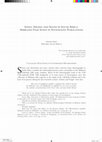
Speculum Musicae: Music and propaganda in the short twentieth century, 2014
The Voortrekker Monument now [2006] stands as a strange and poignant reminder of how empty the ea... more The Voortrekker Monument now [2006] stands as a strange and poignant reminder of how empty the earnest vanity of a once super-confident generation can be 2. Volksliedjies (Folk Songs) in Contemporary Historiography S ome late twentieth and early twenty-first century music historiography in South Africa considers the relationship between music and politics in the Afrikaans volksliedjie (folk song) 3 tradition. Much of this historiography looks to the FAK Volkssangbundel (FAK 4 Folk Songbook) 5 as its main source of interrogation, since this collection of Afrikaans folk songs lies at the origin of the volksliedjie tradition and at the heart of its practice during the late twentieth century 6. Schutte and Visagie 7 write that: After years of struggling to publish a songbook that could be deemed the Afrikaner's own, the [Songbook] was published in 1937 (one year before the symbolic commemoration of the Great Trek), and many South Africans 1. Thank you to my colleague Professor Marc Duby who introduced me to the writings of Henri Lefebvre and who contributed to this argument at various stages of its development. 2
Conference Presentations by Annemie Stimie Behr
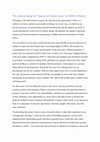
SASRIM, 2022
At the dawn of opera studies in democratic South Africa lies that fabled find, the Eoan archive. ... more At the dawn of opera studies in democratic South Africa lies that fabled find, the Eoan archive. Since then, many scholars have explored the genre's peculiar local fecundity. Matters of indigenization are addressed through productions like U-Carmen eKhayelitsha; the openness of genre is studied in Matshikiza's King Kong and similar projects; a destabilizing of Western hierarchies is searched for in Kentridge's regieoper; the emergence of a South African operatic culture is traced in reception histories; the creative components of a genre conceptualized as "African opera" are searched for in new operas. The list continues.
In this paper, I draw on opera studies in South Africa to open a conversation about the relationship between contemporary, local research and tertiary music curricula. I offer a case study in the form of a report to the society on the process of designing and developing a syllabus that centres on opera and choral music in South Africa. The report describes the process as it unfolded within the context of recurriculating the Bachelor of Music degree at UNISA.
Although broader questions around programme design naturally present themselves, the paper draws our attention also to narrower questions around syllabus design: Why are undergraduate music students not introduced to local music research? How does one offer material and content on subjects for which no textbooks exist? How do questions and issues raised by local research differ from the conventional ones that continue to be offered in most of our curricula?
The module on local opera and choral music that is now offered at UNISA uniquely speaks to these matters. The report makes a case for drawing on contemporary, local research to inform our syllabi as a necessary strategy for decolonizing music curricula at our universities.
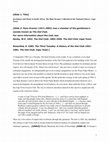
SASRIM, 2010
was a Tuesday. The third Tuesday of the month. It was a tradition: every third Tuesday of the mon... more was a Tuesday. The third Tuesday of the month. It was a tradition: every third Tuesday of the month, the distinguished members of the Owl Club gathered at the building of the City and Civil Service Club in Queen Victoria Street in Cape Town. The gentlemen, members by invitation and not request, were aficionados of the 'liberal Arts and Sciences' who met once a month to enjoy an evening of colloquial engagement. An indispensable part of an evening's programme was the Waste Paper Basketa speech by any one of the club members in which he had the freedom to speak whatever was on his mind, since Q&A sessions were not part of the agenda. On this particular evening, in the early spring of 1985, it was Hans Kramer's turn to deliver his Waste Paper Basket which included anecdotes about his son's musical development, the gramophone record industry, his own music shop called the Home of Music and the Cape Town Concert Club. The way in which he introduces himself in this speech is significant with regards to the conference theme: I came to Cape Town in 1934 from Hannover-[...]and I have always been emphatic to make sure that people realize that a Hannovarian has more of a connection with Englandand after all I arrived here when we were still part of the British Empire-[...], because when Greta and I visited England for the first time in 1969, [...]and when we passed through Heathrow airport passport control it was really a bit of a heartbreaking experience to present a South African passport-I was not ashamed of itbut I was worried when the passport official remarked 'oh, South African'. I said 'yes, but look where I was born' and he turned the pages of my passport and he said 'Hannover, what of it?' So I said 'well we helped you out with a couple of Kings'. There are a few echoes of empire that reverberate through this quotation. The time is 1985, late Apartheid. The setting is Cape Town with its facade etched by historical markers of colonialism, empire and Afrikaner supremacy-[slide3] Rhodes Memorial, the Castle of Good Hope, [slide 4] St George's
Talks by Annemie Stimie Behr
Late last year, I reported to my institution, UNISA, on how I designed and developed a module on ... more Late last year, I reported to my institution, UNISA, on how I designed and developed a module on opera and choral music as part of a larger project of recurriculating our Bachelors of Music degree. The context into which I reported was our annual Transformation conference. My presentation started with a full introduction of myself and my musical pedigree. I shan't follow suit here. I am white and Afrikaans. That is all you need to know. Because already, you know a lot. To introduce my institutional context is far more interesting and pertinent to our discussion here. I find, nevertheless, that I can introduce this context only through the subjective lens of personal experience.
Africa Open Institute Seminar, 2023
Late last year, I reported to my institution, UNISA, on how I designed and developed a module on ... more Late last year, I reported to my institution, UNISA, on how I designed and developed a module on opera and choral music as part of a larger project of recurriculating our Bachelors of Music degree. The context into which I reported was our annual Transformation conference. My presentation started with a full introduction of myself and my musical pedigree. I shan't follow suit here. I am white and Afrikaans. That is all you need to know. Because already, you know a lot. To introduce my institutional context is far more interesting and pertinent to our discussion here. I find, nevertheless, that I can introduce this context only through the subjective lens of personal experience.







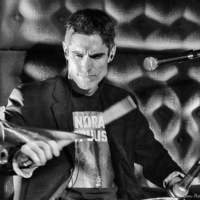
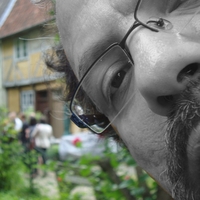


Uploads
Book Reviews by Annemie Stimie Behr
Journal articles by Annemie Stimie Behr
The majority of musicrelated articles in Die Brandwag appeared within the first five years of publication. The most important articles are Bosman di Ravelli’s six fantasies about the life of Chopin. During the latter half of the decade, articles focused mostly on art in general and its relation to nationality. Music played a minor role in these discussions. Examples of these articles are J.F.E. Celliers’s “Kuns in verband met nasionaliteit en geskiedenis” (25 January 1919) and Eric Mayer’s “’n Nasionale kuns in SuidAfrika” (24 December 1919).
During the four years that Die Nuwe Brandwag was published, music was approached in one of two ways: through particular articles (for instance, Jan Bouws’s “Die Nederlandse musiek”) or as a subsection in more general discussions about the arts. All the articles refer to European music history, while the ideals of Afrikaner nationalism permeate the text. The hypothesis of this article is that Afrikaner nationalism has been undertheorised by historians and political scientists, who have been largely uninterested in cultural (specifically music) discourses. More subtle theorisation is thus made possible through studying those texts produced in Afrikaans during the first half of the twentieth century – texts in which a tension emerges between the national
and international ingredients of a particular identity. This article will interpret this tension with reference to Edward Said’s Culture and imperialism (1993).
Dissertation by Annemie Stimie Behr
Jews exercised South African musical citizenship through supporting the forming of musical institutions, as well as through pedagogy, the performing arts and composition, representations of which align with English cultural forms in the music reportage. While also concerned with securing the Jewish position in South Africa, Zionism developed a vision of and for Palestine by translating the act of making aliyah (immigrating to Palestine) into a symbolic, musical practice.
The makings of the community’s internal Jewish identity forged around tensions between Eastern European and Western European (most notably German) Jewish immigrants. Musical representations of Eastern Europe, which emanated from Russia, America and South Africa, generated a volume of content that reflected a Jewish preoccupation with Russian Jews as both ignobly backward and commendably Jewish. German Jews fell out of favour with the South African Jewish community because of their proclivity to assimilate, which could explain why they received little musical attention in these newspapers. However, engagement with contemporary events in Europe, and strong depictions of German culture in the primary source material, emanated from the United States. American musical representations reveal the degree to which the internal tensions of European Jewry were racial.
The musical geographies of England, Palestine, Russia, Germany and America in a South African Jewish imaginary reveal a cosmopolitanism of Jewish whiteness and the musical vision it harboured for Palestine as a Jewish country of the West.
Reviews by Annemie Stimie Behr
Book chapters by Annemie Stimie Behr
Conference Presentations by Annemie Stimie Behr
In this paper, I draw on opera studies in South Africa to open a conversation about the relationship between contemporary, local research and tertiary music curricula. I offer a case study in the form of a report to the society on the process of designing and developing a syllabus that centres on opera and choral music in South Africa. The report describes the process as it unfolded within the context of recurriculating the Bachelor of Music degree at UNISA.
Although broader questions around programme design naturally present themselves, the paper draws our attention also to narrower questions around syllabus design: Why are undergraduate music students not introduced to local music research? How does one offer material and content on subjects for which no textbooks exist? How do questions and issues raised by local research differ from the conventional ones that continue to be offered in most of our curricula?
The module on local opera and choral music that is now offered at UNISA uniquely speaks to these matters. The report makes a case for drawing on contemporary, local research to inform our syllabi as a necessary strategy for decolonizing music curricula at our universities.
Talks by Annemie Stimie Behr
The majority of musicrelated articles in Die Brandwag appeared within the first five years of publication. The most important articles are Bosman di Ravelli’s six fantasies about the life of Chopin. During the latter half of the decade, articles focused mostly on art in general and its relation to nationality. Music played a minor role in these discussions. Examples of these articles are J.F.E. Celliers’s “Kuns in verband met nasionaliteit en geskiedenis” (25 January 1919) and Eric Mayer’s “’n Nasionale kuns in SuidAfrika” (24 December 1919).
During the four years that Die Nuwe Brandwag was published, music was approached in one of two ways: through particular articles (for instance, Jan Bouws’s “Die Nederlandse musiek”) or as a subsection in more general discussions about the arts. All the articles refer to European music history, while the ideals of Afrikaner nationalism permeate the text. The hypothesis of this article is that Afrikaner nationalism has been undertheorised by historians and political scientists, who have been largely uninterested in cultural (specifically music) discourses. More subtle theorisation is thus made possible through studying those texts produced in Afrikaans during the first half of the twentieth century – texts in which a tension emerges between the national
and international ingredients of a particular identity. This article will interpret this tension with reference to Edward Said’s Culture and imperialism (1993).
Jews exercised South African musical citizenship through supporting the forming of musical institutions, as well as through pedagogy, the performing arts and composition, representations of which align with English cultural forms in the music reportage. While also concerned with securing the Jewish position in South Africa, Zionism developed a vision of and for Palestine by translating the act of making aliyah (immigrating to Palestine) into a symbolic, musical practice.
The makings of the community’s internal Jewish identity forged around tensions between Eastern European and Western European (most notably German) Jewish immigrants. Musical representations of Eastern Europe, which emanated from Russia, America and South Africa, generated a volume of content that reflected a Jewish preoccupation with Russian Jews as both ignobly backward and commendably Jewish. German Jews fell out of favour with the South African Jewish community because of their proclivity to assimilate, which could explain why they received little musical attention in these newspapers. However, engagement with contemporary events in Europe, and strong depictions of German culture in the primary source material, emanated from the United States. American musical representations reveal the degree to which the internal tensions of European Jewry were racial.
The musical geographies of England, Palestine, Russia, Germany and America in a South African Jewish imaginary reveal a cosmopolitanism of Jewish whiteness and the musical vision it harboured for Palestine as a Jewish country of the West.
In this paper, I draw on opera studies in South Africa to open a conversation about the relationship between contemporary, local research and tertiary music curricula. I offer a case study in the form of a report to the society on the process of designing and developing a syllabus that centres on opera and choral music in South Africa. The report describes the process as it unfolded within the context of recurriculating the Bachelor of Music degree at UNISA.
Although broader questions around programme design naturally present themselves, the paper draws our attention also to narrower questions around syllabus design: Why are undergraduate music students not introduced to local music research? How does one offer material and content on subjects for which no textbooks exist? How do questions and issues raised by local research differ from the conventional ones that continue to be offered in most of our curricula?
The module on local opera and choral music that is now offered at UNISA uniquely speaks to these matters. The report makes a case for drawing on contemporary, local research to inform our syllabi as a necessary strategy for decolonizing music curricula at our universities.